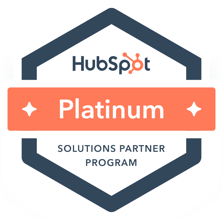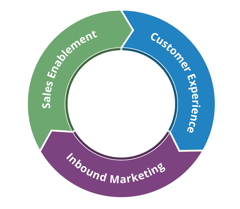As we push past the second anniversary of the COVID-19 pandemic, countless lives have been changed forever, how society functions have met a new normal, and business has been transformed overnight. There is no denying that the past 2+ years have been challenging for everyone. Not only have companies had to morph to adjust to the new normal, but consumers and ideologies that run the commercial world have been altered forever. Since digital marketing has always focused on aligning a brand with customer preferences and needs, it is important to understand how COVID-19 has impacted digital marketing and what's to come next.
The Audience Has Changed
1. A New Customer Persona is Emerging
Lockdowns and social distancing have shifted consumer habits and demands. People are becoming more self-sufficient as they readily embrace digital trends. From working to shopping to entertainment, every option is now available online. Across the globe, consumers have quickly accepted and implemented digital channels to fulfill their needs. According to Bazaarvoice, 49% of global consumers now shop online more than they did before the pandemic. In the U.S. alone, 62% of consumers shop more online now than before.
More importantly, 52% of the respondents surveyed by PYMNTs say they won’t go back to grocery shopping in-store. Research from Digital Commerce 360 shows that 58% of online shoppers expect to order online and interact online more in the coming months. People now expect that information, products, and alternate digital solutions replace services once commonly accessed physically.
2. Consumers Are Now More Careful About Spending
According to Deloitte, personal consumption expenditure (PCE) fell by 10.1% in Q2 from Q1 in 2020. 40% of consumers say they have also decreased spending on discretionary categories. What is holding them back? With constant changes in the economy and rising unemployment, people are worried about job losses and earnings in the future, prompting them to save more.
3. How Has Digital Marketing Altered to Align with This New Audience?
In response to altering preferences and spending habits, digital marketing efforts are concentrated on offering more value to customers. Leveraging and curating content across several online platforms continues to accelerate and evolve. One of the marketing strategies that has significantly improved is social media marketing. Analysis by Visa stated that 25% of online purchases are now made via an interaction with a social media platform. Consumers claim it is convenient, simplifies the shopping experience, and allows them to utilize discounts offered by influencers. As a result, social media ad spending has also increased. SocialBakers’ Social Media Trends Report stated that global social ad spend rose 56.4% in Q3 2020. For more on social media marketing, you can read 9 Tips to Optimize Your Social Media Strategy.
Moreover, customer experience on online channels is in the spotlight more than ever before. Brands are making advancements in the complete customer experience to draw new customers and retain existing customers. According to Forrester, 25% of brands will focus on improving the quality of their customer's experience this year.
Redefined Business Goals
Your consumers are now online. And so are your competitors. That means business owners need to focus on positioning their brands front and center so that they remain in the path of their target audience. And so you’ve noticed, more virtual, remote, and contactless solutions are establishing themselves as commonplace in every aspect. This has helped digital marketers reach out, engage, and connect with consumers wherever they may be, which is not going to change anytime soon.
What has been a deal-breaker is that COVID was the perfect reason for brands to stand out in the crowd and connect with existing and potential customers. While some brands were left scrambling to get on board the digital network, those already established in the space were able to claim the customers their competitors were losing, whether it was by offering up-to-date information, products that consumers needed, or delivery options.
Research from McKinsey found that 75% of American shoppers changed their shopping behavior and brand preference amid the pandemic. More interestingly, more than 60% plan to stick with these buying habits changes post-crisis. Brands need to refine their strategies to understand that the impact of COVID is going to go far beyond a year or two. The focus of many digital marketers is on enhancing customer loyalty and retention. Forrester expects company spending to improve the customer experience to increase by 30% this year, allowing businesses to hold onto the new online customers gained during the 2020 e-commerce boom.
So How Has Digital Marketing Changed to Align with New Business Goals?
To achieve digital marketing success during COVID-19, businesses have had to re-evaluate marketing strategies and consider the following:
- Alignment: Current value propositions and products should align with new customer needs and preferences. Your product or service is only necessary if you offer something of value and resolve consumer pain points. Remaining current and relevant are the keys to success.
- Segmentation: Brands need to reach out to the various segments of their target audience and offer relevant content, products, and services based on those unique segments of consumers. This helps facilitate personalization to provide the best value to their customers. More importantly, it allows organizations to look at each customer as individuals and cater to their needs.
- Innovation: Even during a crisis, brands and their campaigns need to plan for growth. By collecting and analyzing data, companies can also identify additional products and services offered to consumers and find innovative ways to engage with them online.
- Localization: Your consumers are looking for local content, whether news on things happening in their communities or information about local stores and how to support local brands. For brands that can engage in local communities, this is the ideal opportunity to connect with customers in the area.
- Integrated Communications: Ideologies now center on supporting conversational marketing so that consumers can get information more quickly and experience one on one interactions. Consider how you can leverage things like Knowledge Base/FAQs on your website, chat bots, live chat options, and more.
As a Whole, Martech is Evolving
Digital marketers have access to tools that can help them understand consumer trends, behaviors, lifestyles, and attitudes since the lockdown. More importantly, these tools allow marketers to nurture leads and guide them deeper into the sales funnel. However, the challenge lies in choosing the best tools for the company’s individual business needs and integrating the tools effectively to get the most out of the functionalities they have to offer.
With the wide variety of software and technology available in the market, the number of ways brands can engage with consumers is limitless. Choices include CRM platforms, chat bots, augmented and virtual reality apps, personalized emails, analytics, and much more. Determine the toolsets that will be best for your business to see how you can leverage these tools to your advantage.
But let’s not forget that digital marketing strategies also focus on producing valuable content. Digital marketers know they need to offer something other than just text-centric content. Infographics, memes, podcasts, and video content have gained more traction. Consider how you can leverage webinars, video recordings, short snippets of interactive content, and more to help engage your digital consumer.
Digital marketers know that consumers change their preferences all the time based on what is happening in the world around them. It is the digital marketer's job to match consumer preferences and trends. But a year into COVID, businesses are taking a step back and reconsidering what to do next. Everything from business goals to marketing strategies has adapted to change rather quickly. All will feel the ripple effect of these modifications for years to come.
Brands are equipping themselves for the long haul. Common changes across every industry include incorporating real-time data dashboards, re-formulating marketing strategies, and reducing internal red tape. This will allow businesses to move faster and be more flexible.
If you're interested in discussing your current or future digital marketing strategy, we invite you to schedule an inbound marketing consultation with our team.


.png?width=80&height=80&name=diamond-badge-color%20(1).png)
__Square.png?width=250&height=250&name=Marketing_Hub_(1)__Square.png)




.png?width=250&name=diamond-badge-color%20(1).png)
